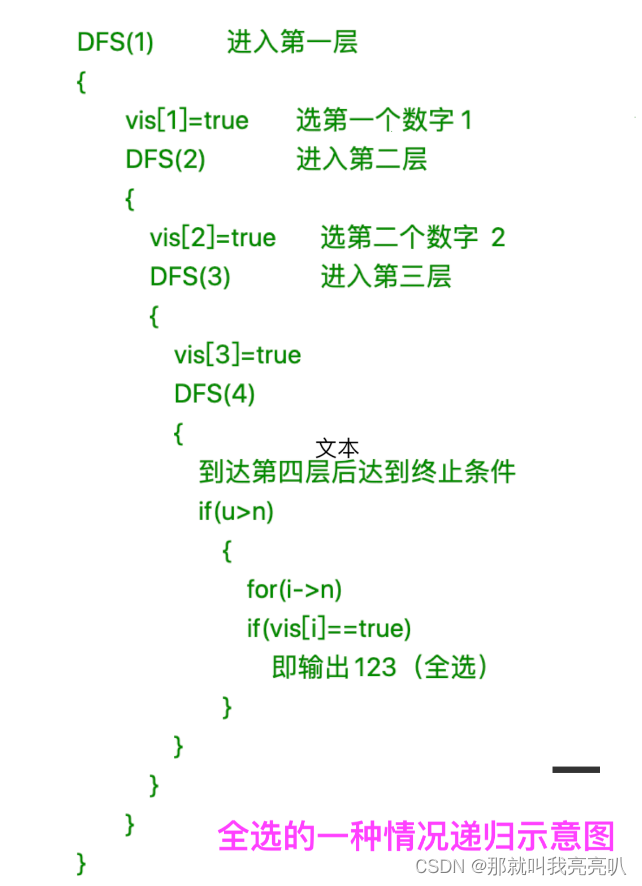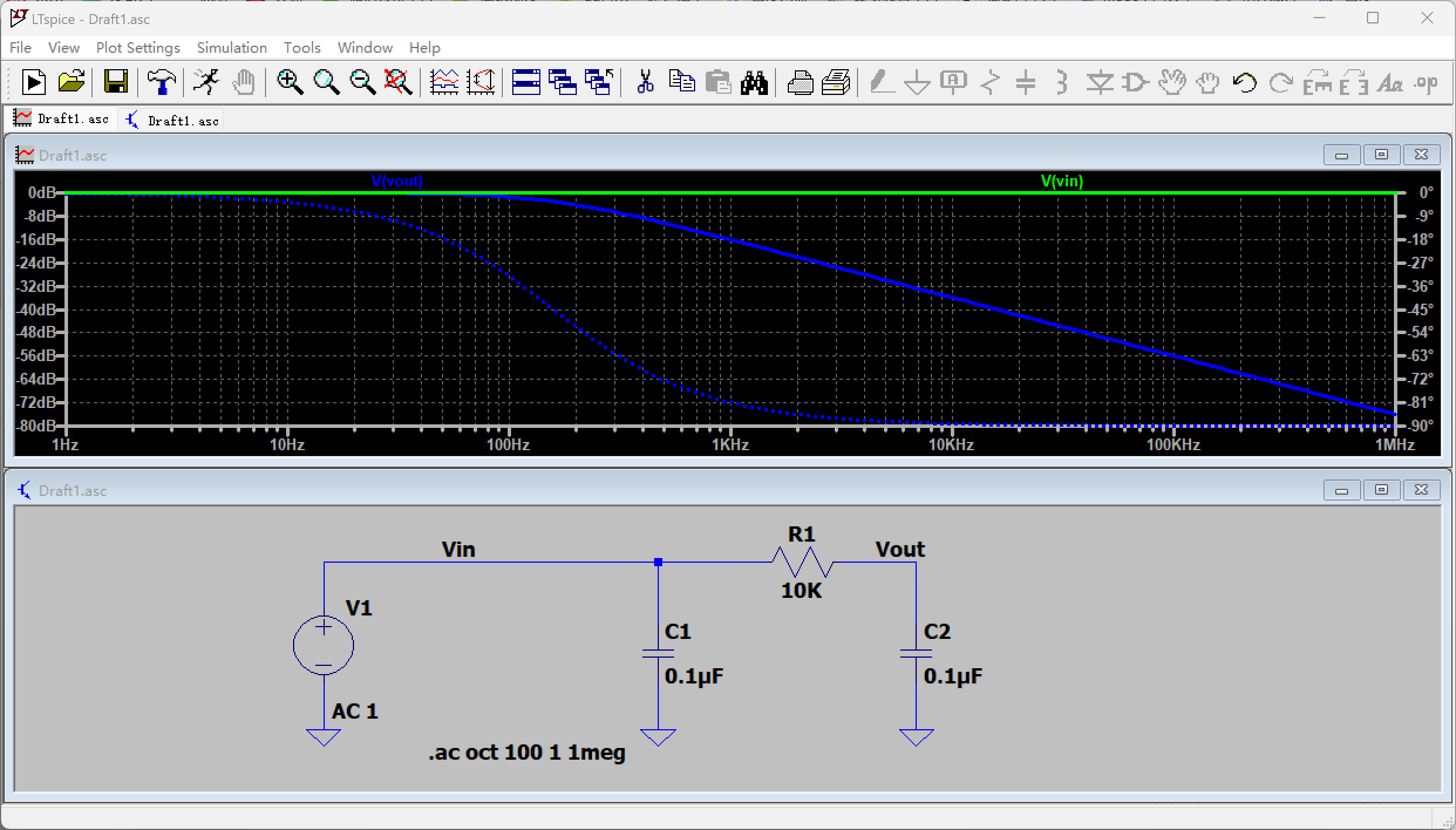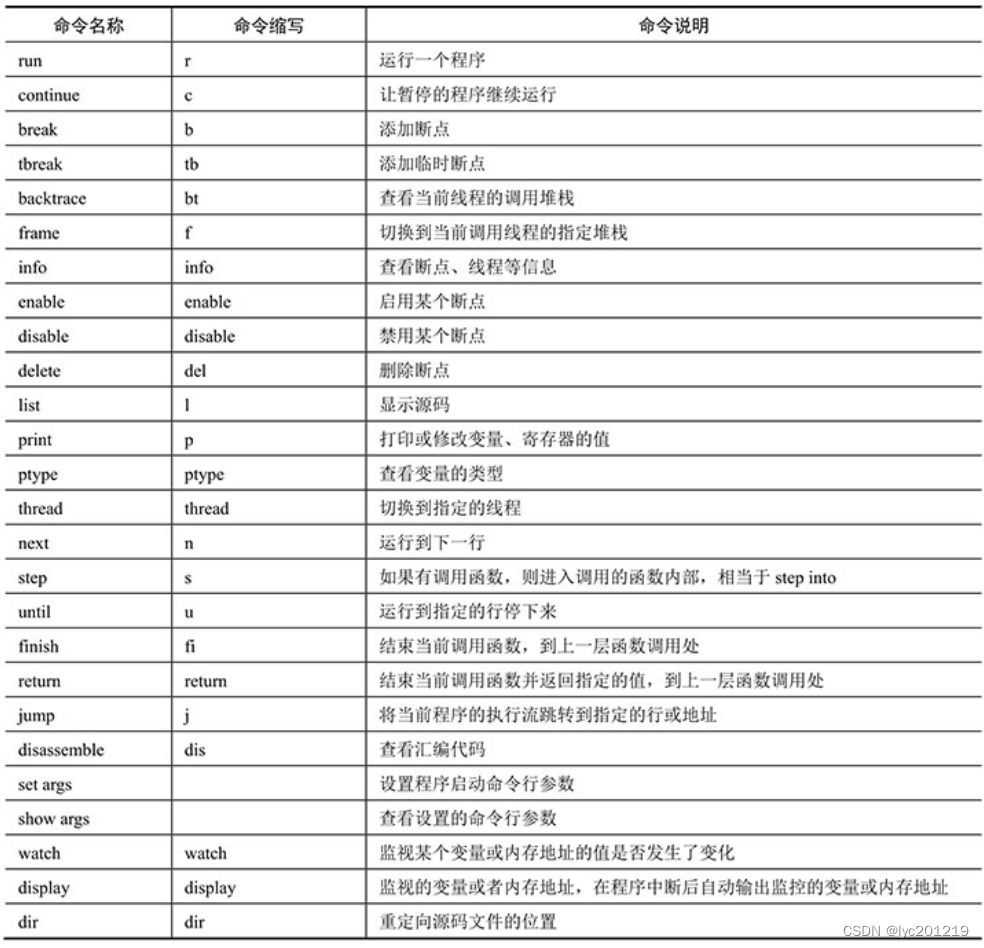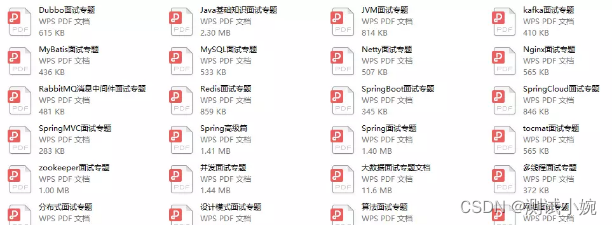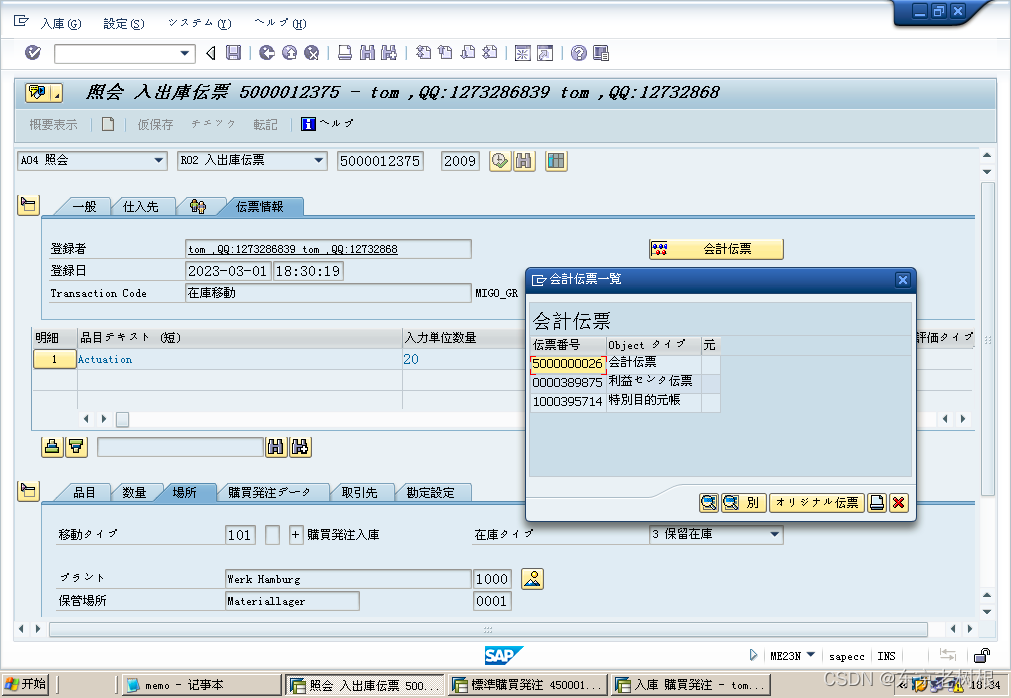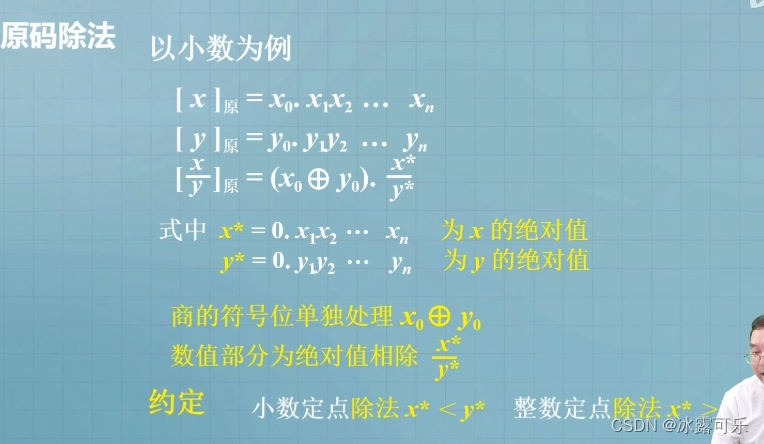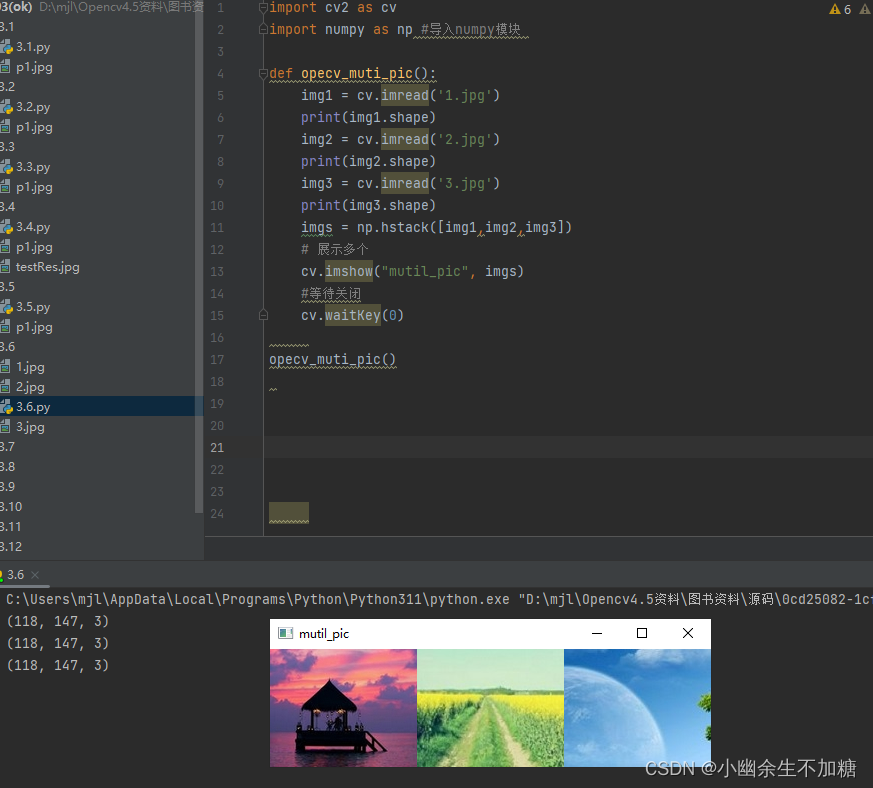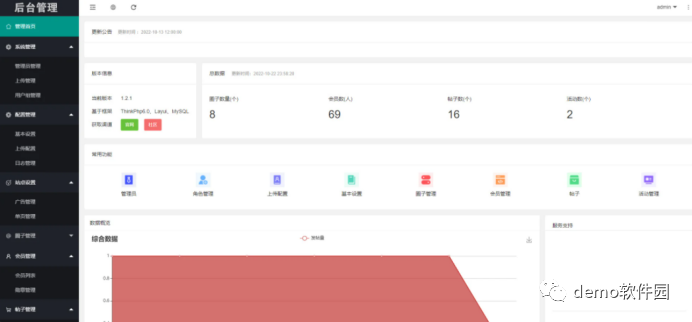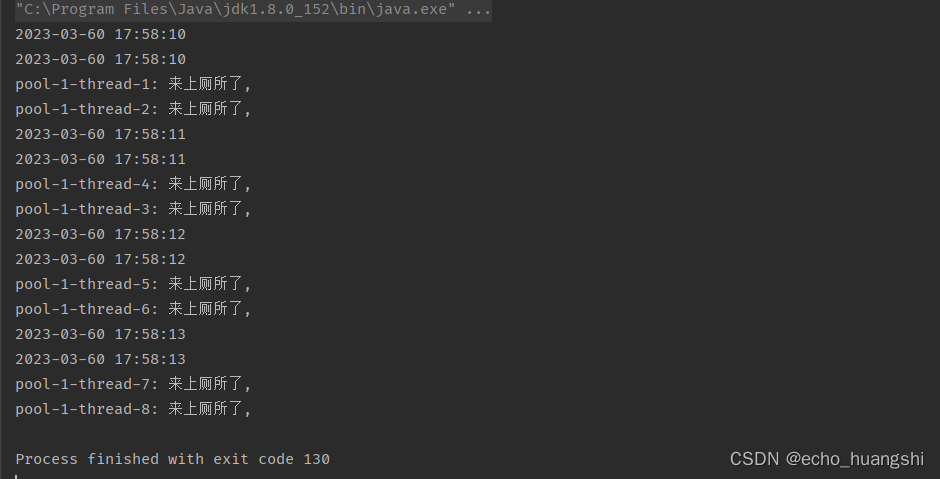文章目录
- 一、熟悉主要接口
- 二、SqlSession的获取
- 1、通过数据源获取SqlSession
- 三、Mapper的获取与代理
- 1、从SqlSession获取Mapper
- 2、执行Mapper方法前准备逻辑
- 3、SqlCommand的创建
- 4、构造MethodSignature
- 四、执行Mapper的核心方法
- 1、执行Mapper的方法逻辑
- 五、简单SELECT处理过程
- 1、对参数进行解析
- 2、DefaultSqlSession的selectOne逻辑
- 3、Executor的query
- 4、查询数据库的逻辑
- (1)prepareStatement
- 5、StatementHandler的query方法
- 6、处理结果集
- (1)处理结果集
- (2)创建映射结果对象
- (3)根据columnName和type属性名映射赋值
- (4)applyPropertyMappings
- 写在后面
一、熟悉主要接口
DefaultSqlSession:SqlSession接口的默认实现类
Executor接口:

BaseExecutor:基础执行器,封装了子类的公共方法,包括一级缓存、延迟加载、回滚、关闭等功能;
SimpleExecutor:简单执行器,每执行一条 sql,都会打开一个 Statement,执行完成后关闭;
ReuseExecutor:重用执行器,相较于 SimpleExecutor 多了 Statement 的缓存功能,其内部维护一个 Map<String, Statement> ,每次编译完成的 Statement 都会进行缓存,不会关闭;
BatchExecutor:批量执行器,基于 JDBC 的 addBatch、executeBatch 功能,并且在当前 sql 和上一条 sql 完全一样的时候,重用Statement,在调用doFlushStatements 的时候,将数据刷新到数据库;
CachingExecutor:缓存执行器,装饰器模式,在开启缓存的时候。会在上面三种执行器的外面包上 CachingExecutor;
StatementHandler接口:
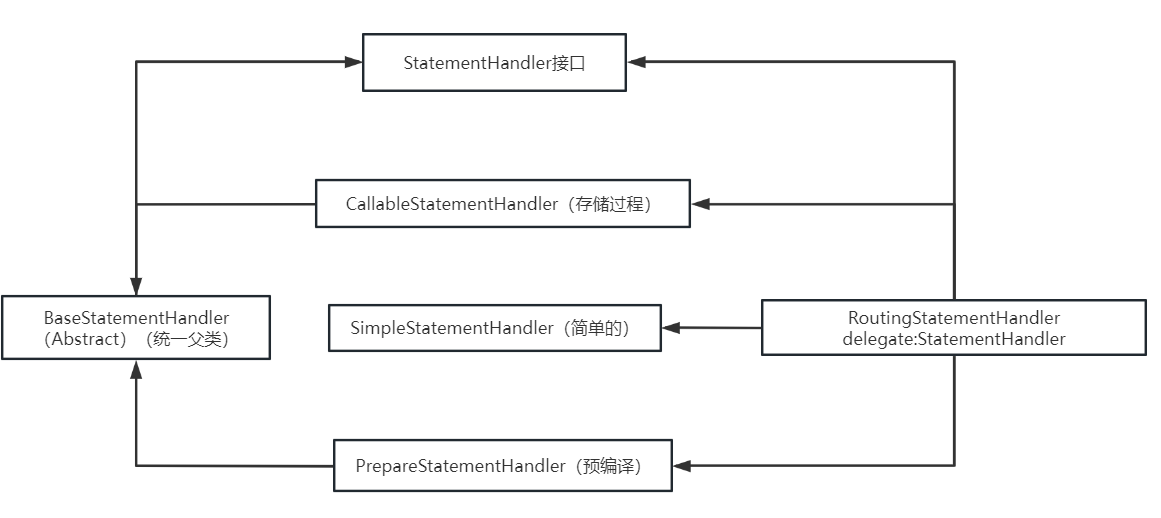

MyBatis实际使用的StatementHandler,就是RoutingStatementHandler,拦截器拦截的也是RoutingStatementHandler。它会根据Exector类型创建对应的StatementHandler,保存到属性delegate中,所以插件分离还要分离出具体的StatementHandler。
BaseStatementHandler:基础语句处理器(抽象类),它基本把语句处理器接口的核心部分都实现了,包括配置绑定、执行器绑定、映射器绑定、参数处理器构建、结果集处理器构建、语句超时设置、语句关闭等,并另外定义了新的方法 instantiateStatement 供不同子类实现以便获取不同类型的语句连接,子类可以普通执行 SQL 语句,也可以做预编译执行,还可以执行存储过程等。
SimpleStatementHandler:普通语句处理器,继承 BaseStatementHandler 抽象类,对应 java.sql.Statement 对象的处理,处理普通的不带动态参数运行的 SQL,即执行简单拼接的字符串语句,同时由于 Statement 的特性,SimpleStatementHandler 每次执行都需要编译 SQL (注意:我们知道 SQL 的执行是需要编译和解析的)。
PreparedStatementHandler:预编译语句处理器,继承 BaseStatementHandler 抽象类,对应 java.sql.PrepareStatement 对象的处理,相比上面的普通语句处理器,它支持可变参数 SQL 执行,由于 PrepareStatement 的特性,它会进行预编译,在缓存中一旦发现有预编译的命令,会直接解析执行,所以减少了再次编译环节,能够有效提高系统性能,并预防 SQL 注入攻击(所以是系统默认也是我们推荐的语句处理器)。
CallableStatementHandler:存储过程处理器,继承 BaseStatementHandler 抽象类,对应 java.sql.CallableStatement 对象的处理,很明了,它是用来调用存储过程的,增加了存储过程的函数调用以及输出/输入参数的处理支持。
RoutingStatementHandler:路由语句处理器,直接实现了 StatementHandler 接口,作用如其名称,确确实实只是起到了路由功能,并把上面介绍到的三个语句处理器实例作为自身的委托对象而已,所以执行器在构建语句处理器时,都是直接 new 了 RoutingStatementHandler 实例。
RoutingStatementHandler:路由。Mybatis实际使用的类,拦截的StatementHandler实际就是它。它会根据Exector类型创建对应的StatementHandler,保存到属性delegate中;
ResultSetHandler接口:处理Statement执行后产生的结果集,生成结果列表;处理存储过程执行后的输出参数;
DefaultResultSetHandler:ResultSetHandler的 默认实现类。
二、SqlSession的获取
SqlSessionFactory接口的默认实现是DefaultSqlSessionFactory,其中实现了很多openSession的重载方法用来获取SqlSession,有几个关键的参数:
// DefaultSqlSessionFactory的重载方法
@Override
public SqlSession openSession() {
return openSessionFromDataSource(configuration.getDefaultExecutorType(), null, false);
}
@Override
public SqlSession openSession(boolean autoCommit) {
return openSessionFromDataSource(configuration.getDefaultExecutorType(), null, autoCommit);
}
@Override
public SqlSession openSession(ExecutorType execType) {
return openSessionFromDataSource(execType, null, false);
}
@Override
public SqlSession openSession(TransactionIsolationLevel level) {
return openSessionFromDataSource(configuration.getDefaultExecutorType(), level, false);
}
@Override
public SqlSession openSession(ExecutorType execType, TransactionIsolationLevel level) {
return openSessionFromDataSource(execType, level, false);
}
@Override
public SqlSession openSession(ExecutorType execType, boolean autoCommit) {
return openSessionFromDataSource(execType, null, autoCommit);
}
① ExecutorType
public enum ExecutorType {
SIMPLE, REUSE, BATCH // 默认是SIMPLE
}
② autoCommit
// 是否自动提交
boolean autoCommit
③ TransactionIsolationLevel事务等级
public enum TransactionIsolationLevel {
NONE(Connection.TRANSACTION_NONE),
READ_COMMITTED(Connection.TRANSACTION_READ_COMMITTED),
READ_UNCOMMITTED(Connection.TRANSACTION_READ_UNCOMMITTED),
REPEATABLE_READ(Connection.TRANSACTION_REPEATABLE_READ),
SERIALIZABLE(Connection.TRANSACTION_SERIALIZABLE);
}
1、通过数据源获取SqlSession
// org.apache.ibatis.session.defaults.DefaultSqlSessionFactory#openSessionFromDataSource
private SqlSession openSessionFromDataSource(ExecutorType execType, TransactionIsolationLevel level, boolean autoCommit) {
Transaction tx = null;// 包装数据库连接。处理连接生命周期,包括:连接的创建、准备、提交/回滚和关闭。
try {
final Environment environment = configuration.getEnvironment();
// 在配置文件中或者API方式定义默认的JdbcTransactionFactory
final TransactionFactory transactionFactory = getTransactionFactoryFromEnvironment(environment);
tx = transactionFactory.newTransaction(environment.getDataSource(), level, autoCommit);
final Executor executor = configuration.newExecutor(tx, execType); // 创建执行器
return new DefaultSqlSession(configuration, executor, autoCommit); // 创建默认的SqlSession
} catch (Exception e) {
closeTransaction(tx); // may have fetched a connection so lets call close()
throw ExceptionFactory.wrapException("Error opening session. Cause: " + e, e);
} finally {
ErrorContext.instance().reset();
}
}
我们来看一下创建执行器的逻辑:
// org.apache.ibatis.session.Configuration#newExecutor(org.apache.ibatis.transaction.Transaction, org.apache.ibatis.session.ExecutorType)
public Executor newExecutor(Transaction transaction, ExecutorType executorType) {
executorType = executorType == null ? defaultExecutorType : executorType;
executorType = executorType == null ? ExecutorType.SIMPLE : executorType; // 默认是SIMPLE
Executor executor;
if (ExecutorType.BATCH == executorType) {
executor = new BatchExecutor(this, transaction);
} else if (ExecutorType.REUSE == executorType) {
executor = new ReuseExecutor(this, transaction);
} else {
executor = new SimpleExecutor(this, transaction);
}
if (cacheEnabled) {
// 开启缓存的话,使用装饰者模式进行装饰
executor = new CachingExecutor(executor);
}
// 责任链模式,使用JDK动态代理增强所有的拦截器,为后续的拦截器的使用做准备
executor = (Executor) interceptorChain.pluginAll(executor);
return executor;
}
三、Mapper的获取与代理
1、从SqlSession获取Mapper
官方文档中提供了一种使用SqlSession做查询的实例:
try (SqlSession session = sqlSessionFactory.openSession()) {
Blog blog = (Blog) session.selectOne("org.mybatis.example.BlogMapper.selectBlog", 101);
}
但是推荐使用下面的方式进行处理:
try (SqlSession session = sqlSessionFactory.openSession()) {
BlogMapper mapper = session.getMapper(BlogMapper.class);
Blog blog = mapper.selectBlog(101);
}
我们对DefaultSqlSession的getMapper方法进行分析:
// org.apache.ibatis.session.defaults.DefaultSqlSession#getMapper
@Override
public <T> T getMapper(Class<T> type) {
return configuration.getMapper(type, this);
}
// org.apache.ibatis.session.Configuration#getMapper
public <T> T getMapper(Class<T> type, SqlSession sqlSession) {
return mapperRegistry.getMapper(type, sqlSession);
}
// org.apache.ibatis.binding.MapperRegistry#getMapper
public <T> T getMapper(Class<T> type, SqlSession sqlSession) {
final MapperProxyFactory<T> mapperProxyFactory = (MapperProxyFactory<T>) knownMappers.get(type);
if (mapperProxyFactory == null) {
throw new BindingException("Type " + type + " is not known to the MapperRegistry.");
}
try {
return mapperProxyFactory.newInstance(sqlSession);
} catch (Exception e) {
throw new BindingException("Error getting mapper instance. Cause: " + e, e);
}
}
我们发现,就是根据接口的Class类型,从MapperRegistry中获取,在SqlSessionFactory接口中我们分析到,在创建SqlSessionFactory时,会在MapperRegistry存放一个MapperProxyFactory,此时我们会直接拿出来这个MapperProxyFactory。
最终调用mapperProxyFactory.newInstance方法:
// org.apache.ibatis.binding.MapperProxyFactory#newInstance(org.apache.ibatis.binding.MapperProxy<T>)
protected T newInstance(MapperProxy<T> mapperProxy) {
return (T) Proxy.newProxyInstance(mapperInterface.getClassLoader(), new Class[] { mapperInterface }, mapperProxy);
}
// org.apache.ibatis.binding.MapperProxyFactory#newInstance(org.apache.ibatis.session.SqlSession)
public T newInstance(SqlSession sqlSession) {
final MapperProxy<T> mapperProxy = new MapperProxy<>(sqlSession, mapperInterface, methodCache);
return newInstance(mapperProxy);
}
最终使用就JDK动态代理,生成了一个代理类,用于处理mapper的方法。
2、执行Mapper方法前准备逻辑
上面说到,从SqlSession中获取的Mapper是被JDK动态代理过的(JDK动态代理请自行学习),当执行Mapper接口的方法时,会调用其关键方法为MapperProxy的invoke方法:
// org.apache.ibatis.binding.MapperProxy#invoke
@Override
public Object invoke(Object proxy, Method method, Object[] args) throws Throwable {
try {
if (Object.class.equals(method.getDeclaringClass())) {// Object的方法直接放行,不需要代理
return method.invoke(this, args);
} else { // 调用invoke方法
return cachedInvoker(method).invoke(proxy, method, args, sqlSession);
}
} catch (Throwable t) {
throw ExceptionUtil.unwrapThrowable(t);
}
}
// org.apache.ibatis.binding.MapperProxy#cachedInvoker
private MapperMethodInvoker cachedInvoker(Method method) throws Throwable {
try {
// 如果缓存没有的话,将方法放入缓存
return MapUtil.computeIfAbsent(methodCache, method, m -> {
if (m.isDefault()) {// 如果是default方法,用这种方式执行
try {
if (privateLookupInMethod == null) {
return new DefaultMethodInvoker(getMethodHandleJava8(method));
} else {
return new DefaultMethodInvoker(getMethodHandleJava9(method));
}
} catch (IllegalAccessException | InstantiationException | InvocationTargetException
| NoSuchMethodException e) {
throw new RuntimeException(e);
}
} else { // 正常的方法,会创建PlainMethodInvoker,装饰MapperMethod
return new PlainMethodInvoker(new MapperMethod(mapperInterface, method, sqlSession.getConfiguration()));
}
});
} catch (RuntimeException re) {
Throwable cause = re.getCause();
throw cause == null ? re : cause;
}
}
最终会new一个MapperMethod,MapperMethod构造方法中包含着两个关键对象的创建:
public MapperMethod(Class<?> mapperInterface, Method method, Configuration config) {
this.command = new SqlCommand(config, mapperInterface, method);
this.method = new MethodSignature(config, mapperInterface, method);
}
3、SqlCommand的创建
我们看一下SqlCommand的构造方法
// org.apache.ibatis.binding.MapperMethod.SqlCommand#SqlCommand
public SqlCommand(Configuration configuration, Class<?> mapperInterface, Method method) {
final String methodName = method.getName();
final Class<?> declaringClass = method.getDeclaringClass();
// 获取MappedStatement
MappedStatement ms = resolveMappedStatement(mapperInterface, methodName, declaringClass,
configuration);
if (ms == null) {
// Flush注解标注的接口
if (method.getAnnotation(Flush.class) != null) {
name = null;
type = SqlCommandType.FLUSH;
} else { // 没找到XML对应的statement
throw new BindingException("Invalid bound statement (not found): "
+ mapperInterface.getName() + "." + methodName);
}
} else { // 查找到MappedStatement
name = ms.getId();
type = ms.getSqlCommandType();
if (type == SqlCommandType.UNKNOWN) {
throw new BindingException("Unknown execution method for: " + name);
}
}
}
在resolveMappedStatement方法中,有以下逻辑:
// org.apache.ibatis.binding.MapperMethod.SqlCommand#resolveMappedStatement
private MappedStatement resolveMappedStatement(Class<?> mapperInterface, String methodName,
Class<?> declaringClass, Configuration configuration) {
// 接口全限定名 + 方法名,就是statementId
String statementId = mapperInterface.getName() + "." + methodName;
if (configuration.hasStatement(statementId)) { // 在addMapper时就会解析xml
return configuration.getMappedStatement(statementId);
} else if (mapperInterface.equals(declaringClass)) {
return null;
}
// 查询父接口
for (Class<?> superInterface : mapperInterface.getInterfaces()) {
if (declaringClass.isAssignableFrom(superInterface)) {
MappedStatement ms = resolveMappedStatement(superInterface, methodName,
declaringClass, configuration);
if (ms != null) {
return ms;
}
}
}
return null;
}
此时我们获取了MappedStatement并且包装好了SqlCommand。
到这,我们应该了解了MyBatis的Statement,其实和JDBC的Statement的含义有些区别,MyBatis的Statement其实就是代表着XML中的每一个SELECT、UPDATE、DELETE等标签中的SQL信息。
SqlCommand中包含着Mapper.xml的id与SQL类型。
4、构造MethodSignature
// MethodSignature的构造方法
public MethodSignature(Configuration configuration, Class<?> mapperInterface, Method method) {
Type resolvedReturnType = TypeParameterResolver.resolveReturnType(method, mapperInterface);
// 设置返回值类型
if (resolvedReturnType instanceof Class<?>) {
this.returnType = (Class<?>) resolvedReturnType;
} else if (resolvedReturnType instanceof ParameterizedType) {
this.returnType = (Class<?>) ((ParameterizedType) resolvedReturnType).getRawType();
} else {
this.returnType = method.getReturnType();
}
// 是否返回void
this.returnsVoid = void.class.equals(this.returnType);
// 是否返回多条
this.returnsMany = configuration.getObjectFactory().isCollection(this.returnType) || this.returnType.isArray();
// 是否返回游标
this.returnsCursor = Cursor.class.equals(this.returnType);
// 是否返回Optional
this.returnsOptional = Optional.class.equals(this.returnType);
this.mapKey = getMapKey(method);
this.returnsMap = this.mapKey != null;
this.rowBoundsIndex = getUniqueParamIndex(method, RowBounds.class);
this.resultHandlerIndex = getUniqueParamIndex(method, ResultHandler.class);
this.paramNameResolver = new ParamNameResolver(configuration, method);
}
处理一些方法签名相关信息。
四、执行Mapper的核心方法
上面我们分析到,使用PlainMethodInvoker包装了MapperMethod,PlainMethodInvoker的invoke方法(JDK动态代理的)最终会调用MapperMethod的execute方法:
private static class PlainMethodInvoker implements MapperMethodInvoker {
private final MapperMethod mapperMethod;
public PlainMethodInvoker(MapperMethod mapperMethod) {
super();
this.mapperMethod = mapperMethod;
}
@Override
public Object invoke(Object proxy, Method method, Object[] args, SqlSession sqlSession) throws Throwable {
return mapperMethod.execute(sqlSession, args);
}
}
1、执行Mapper的方法逻辑
正常的方法会调用MapperMethod的execute方法,该方法中包含着对sql的操作增删改查:
// org.apache.ibatis.binding.MapperMethod#execute
public Object execute(SqlSession sqlSession, Object[] args) {
Object result;
switch (command.getType()) {
case INSERT: {
Object param = method.convertArgsToSqlCommandParam(args);
result = rowCountResult(sqlSession.insert(command.getName(), param));
break;
}
case UPDATE: {
Object param = method.convertArgsToSqlCommandParam(args);
result = rowCountResult(sqlSession.update(command.getName(), param));
break;
}
case DELETE: {
Object param = method.convertArgsToSqlCommandParam(args);
result = rowCountResult(sqlSession.delete(command.getName(), param));
break;
}
case SELECT:
// 返回值为void
if (method.returnsVoid() && method.hasResultHandler()) {
executeWithResultHandler(sqlSession, args);
result = null;
} else if (method.returnsMany()) { // 返回多个
result = executeForMany(sqlSession, args);
} else if (method.returnsMap()) { // 返回Map
result = executeForMap(sqlSession, args);
} else if (method.returnsCursor()) { // 返回游标
result = executeForCursor(sqlSession, args);
} else { // 默认
Object param = method.convertArgsToSqlCommandParam(args);
result = sqlSession.selectOne(command.getName(), param);
if (method.returnsOptional()
&& (result == null || !method.getReturnType().equals(result.getClass()))) {
result = Optional.ofNullable(result);
}
}
break;
case FLUSH: // FLUSH
result = sqlSession.flushStatements();
break;
default:
throw new BindingException("Unknown execution method for: " + command.getName());
}
if (result == null && method.getReturnType().isPrimitive() && !method.returnsVoid()) {
throw new BindingException("Mapper method '" + command.getName()
+ " attempted to return null from a method with a primitive return type (" + method.getReturnType() + ").");
}
return result;
}
我们此处按照官方文档,只分析简单的SELECT查询,其他同理。
五、简单SELECT处理过程
1、对参数进行解析
先执行convertArgsToSqlCommandParam方法对参数进行解析:
// org.apache.ibatis.binding.MapperMethod.MethodSignature#convertArgsToSqlCommandParam
public Object convertArgsToSqlCommandParam(Object[] args) {
return paramNameResolver.getNamedParams(args);
}
// org.apache.ibatis.reflection.ParamNameResolver#getNamedParams
public Object getNamedParams(Object[] args) {
final int paramCount = names.size();
if (args == null || paramCount == 0) { // mapper中的sql不需要参数
return null;
} else if (!hasParamAnnotation && paramCount == 1) { // mapper中的sql需要1个参数
Object value = args[names.firstKey()];
return wrapToMapIfCollection(value, useActualParamName ? names.get(0) : null);
} else { // mapper中的sql需要多个参数
final Map<String, Object> param = new ParamMap<>();
int i = 0;
for (Map.Entry<Integer, String> entry : names.entrySet()) {
param.put(entry.getValue(), args[entry.getKey()]);
// add generic param names (param1, param2, ...)
final String genericParamName = GENERIC_NAME_PREFIX + (i + 1);
// ensure not to overwrite parameter named with @Param
if (!names.containsValue(genericParamName)) {
param.put(genericParamName, args[entry.getKey()]);
}
i++;
}
return param;
}
}
// org.apache.ibatis.reflection.ParamNameResolver#wrapToMapIfCollection
// 只需要一个参数时,需要判断是否是集合、数组或者普通类型
public static Object wrapToMapIfCollection(Object object, String actualParamName) {
if (object instanceof Collection) {
ParamMap<Object> map = new ParamMap<>();
map.put("collection", object);
if (object instanceof List) {
map.put("list", object);
}
Optional.ofNullable(actualParamName).ifPresent(name -> map.put(name, object));
return map;
} else if (object != null && object.getClass().isArray()) {
ParamMap<Object> map = new ParamMap<>();
map.put("array", object);
Optional.ofNullable(actualParamName).ifPresent(name -> map.put(name, object));
return map;
}
return object;
}
2、DefaultSqlSession的selectOne逻辑
解析完参数之后,然后执行DefaultSqlSession的selectOne逻辑:
// org.apache.ibatis.session.defaults.DefaultSqlSession#selectOne(java.lang.String, java.lang.Object)
@Override
public <T> T selectOne(String statement, Object parameter) {
// Popular vote was to return null on 0 results and throw exception on too many.
List<T> list = this.selectList(statement, parameter);
if (list.size() == 1) {
return list.get(0);
} else if (list.size() > 1) {
throw new TooManyResultsException("Expected one result (or null) to be returned by selectOne(), but found: " + list.size());
} else {
return null;
}
}
// org.apache.ibatis.session.defaults.DefaultSqlSession#selectList(java.lang.String, java.lang.Object)
@Override
public <E> List<E> selectList(String statement, Object parameter) {
// RowBounds:返回结果集最大值
return this.selectList(statement, parameter, RowBounds.DEFAULT);
}
// org.apache.ibatis.session.defaults.DefaultSqlSession#selectList(java.lang.String, java.lang.Object, org.apache.ibatis.session.RowBounds)
@Override
public <E> List<E> selectList(String statement, Object parameter, RowBounds rowBounds) {
return selectList(statement, parameter, rowBounds, Executor.NO_RESULT_HANDLER);
}
// org.apache.ibatis.session.defaults.DefaultSqlSession#selectList(java.lang.String, java.lang.Object, org.apache.ibatis.session.RowBounds, org.apache.ibatis.session.ResultHandler)
private <E> List<E> selectList(String statement, Object parameter, RowBounds rowBounds, ResultHandler handler) {
try {
// 获取到已经处理过的MappedStatement ,就是对应Mapper中的sql等信息
MappedStatement ms = configuration.getMappedStatement(statement);
// 最终调用执行器的query
// RowBounds是用来逻辑分页(按照条件将数据从数据库查询到内存中,在内存中进行分页)
// wrapCollection(parameter)是用来装饰集合或者数组参数
return executor.query(ms, wrapCollection(parameter), rowBounds, handler);
} catch (Exception e) {
throw ExceptionFactory.wrapException("Error querying database. Cause: " + e, e);
} finally {
ErrorContext.instance().reset();
}
}
3、Executor的query
Executor接口中包含了增删改查以及提交回滚与对缓存的处理,是真正的sql执行器。
<E> List<E> query(MappedStatement ms, Object parameter, RowBounds rowBounds, ResultHandler resultHandler) throws SQLException;
Configuration中cacheEnabled属性值默认为true,会执行CachingExecutor的query方法:
org.apache.ibatis.executor.CachingExecutor#query(org.apache.ibatis.mapping.MappedStatement, java.lang.Object, org.apache.ibatis.session.RowBounds, org.apache.ibatis.session.ResultHandler)
@Override
public <E> List<E> query(MappedStatement ms, Object parameter, RowBounds rowBounds, ResultHandler resultHandler) throws SQLException {
// 获取SQL基本信息,sql参数会变成 ? 比如“SELECT * FROM user WHERE id = ? ”
BoundSql boundSql = ms.getBoundSql(parameter);
// 获取缓存key,通过算法确保key的唯一性
CacheKey key = createCacheKey(ms, parameter, rowBounds, boundSql);
return query(ms, parameter, rowBounds, resultHandler, key, boundSql);
}
// org.apache.ibatis.executor.CachingExecutor#query(org.apache.ibatis.mapping.MappedStatement, java.lang.Object, org.apache.ibatis.session.RowBounds, org.apache.ibatis.session.ResultHandler, org.apache.ibatis.cache.CacheKey, org.apache.ibatis.mapping.BoundSql)
@Override
public <E> List<E> query(MappedStatement ms, Object parameterObject, RowBounds rowBounds, ResultHandler resultHandler, CacheKey key, BoundSql boundSql)
throws SQLException {
// 获取二级缓存
Cache cache = ms.getCache();
if (cache != null) {
// 当为select语句时,flushCache默认为false,表示任何时候语句被调用,都不会去清空本地缓存和二级缓存
// 当为insert、update、delete语句时,useCache默认为true,表示会将本条语句的结果进行二级缓存
// 刷新二级缓存 (存在缓存且flushCache为true时)
flushCacheIfRequired(ms);
if (ms.isUseCache() && resultHandler == null) {
ensureNoOutParams(ms, boundSql);
// // 从二级缓存中查询数据
@SuppressWarnings("unchecked")
List<E> list = (List<E>) tcm.getObject(cache, key);
// 如果二级缓存中没有查询到数据,则查询数据库
if (list == null) {
// 委托给BaseExecutor执行
list = delegate.query(ms, parameterObject, rowBounds, resultHandler, key, boundSql);
tcm.putObject(cache, key, list); // issue #578 and #116
}
return list;
}
}
// 委托给BaseExecutor执行
return delegate.query(ms, parameterObject, rowBounds, resultHandler, key, boundSql);
}
// BaseExecutor执行query
// org.apache.ibatis.executor.BaseExecutor#query(org.apache.ibatis.mapping.MappedStatement, java.lang.Object, org.apache.ibatis.session.RowBounds, org.apache.ibatis.session.ResultHandler, org.apache.ibatis.cache.CacheKey, org.apache.ibatis.mapping.BoundSql)
@SuppressWarnings("unchecked")
@Override
public <E> List<E> query(MappedStatement ms, Object parameter, RowBounds rowBounds, ResultHandler resultHandler, CacheKey key, BoundSql boundSql) throws SQLException {
ErrorContext.instance().resource(ms.getResource()).activity("executing a query").object(ms.getId());
if (closed) {
throw new ExecutorException("Executor was closed.");
}
if (queryStack == 0 && ms.isFlushCacheRequired()) {
clearLocalCache();
}
List<E> list;
try {
queryStack++;
list = resultHandler == null ? (List<E>) localCache.getObject(key) : null;
if (list != null) { // 本地缓存 // 从一级缓存中获取数据
handleLocallyCachedOutputParameters(ms, key, parameter, boundSql);
} else { // 如果一级缓存没有数据,则从数据库查询数据
list = queryFromDatabase(ms, parameter, rowBounds, resultHandler, key, boundSql);
}
} finally {
queryStack--;
}
if (queryStack == 0) {
for (DeferredLoad deferredLoad : deferredLoads) {
deferredLoad.load();
}
// issue #601
deferredLoads.clear();
if (configuration.getLocalCacheScope() == LocalCacheScope.STATEMENT) {
// issue #482
clearLocalCache();
}
}
return list;
}
4、查询数据库的逻辑
如果一级缓存没有数据,则从数据库查询数据。
// org.apache.ibatis.executor.BaseExecutor#queryFromDatabase
private <E> List<E> queryFromDatabase(MappedStatement ms, Object parameter, RowBounds rowBounds, ResultHandler resultHandler, CacheKey key, BoundSql boundSql) throws SQLException {
List<E> list;
// 存缓存,存个占位符
localCache.putObject(key, EXECUTION_PLACEHOLDER);
try { // 真正的执行数据库逻辑
list = doQuery(ms, parameter, rowBounds, resultHandler, boundSql);
} finally { // 移出缓存
localCache.removeObject(key);
}
// 放入一级缓存
localCache.putObject(key, list);
if (ms.getStatementType() == StatementType.CALLABLE) {
localOutputParameterCache.putObject(key, parameter);
}
return list;
}
在doQuery方法中,最终执行的是SimpleExecutor的doQuery方法,正式进行JDBC那一套了:
// org.apache.ibatis.executor.SimpleExecutor#doQuery
@Override
public <E> List<E> doQuery(MappedStatement ms, Object parameter, RowBounds rowBounds, ResultHandler resultHandler, BoundSql boundSql) throws SQLException {
Statement stmt = null; // java.sql.Statement
try {
// 获取Configuration对象
Configuration configuration = ms.getConfiguration();
// 创建RoutingStatementHandler,用来处理Statement
// RoutingStatementHandler类中初始化delegate类(SimpleStatementHandler、PreparedStatementHandler)
StatementHandler handler = configuration.newStatementHandler(wrapper, ms, parameter, rowBounds, resultHandler, boundSql);
// 子流程1:设置参数
stmt = prepareStatement(handler, ms.getStatementLog());
return handler.query(stmt, resultHandler);
} finally {
// Statement关闭
closeStatement(stmt);
}
}
(1)prepareStatement
我们看一下准备Statement的逻辑:
// org.apache.ibatis.executor.SimpleExecutor#prepareStatement
private Statement prepareStatement(StatementHandler handler, Log statementLog) throws SQLException {
Statement stmt;
Connection connection = getConnection(statementLog);// 获取数据库连接
// 创建Statement(PreparedStatement、Statement、CallableStatement)
stmt = handler.prepare(connection, transaction.getTimeout());
// 相关参数处理
handler.parameterize(stmt);
return stmt;
}
获取连接的逻辑:
// org.apache.ibatis.executor.BaseExecutor#getConnection
protected Connection getConnection(Log statementLog) throws SQLException {
Connection connection = transaction.getConnection(); // 从事务管理器中拿到连接
if (statementLog.isDebugEnabled()) {
return ConnectionLogger.newInstance(connection, statementLog, queryStack);
} else {
return connection;
}
}
// org.apache.ibatis.transaction.jdbc.JdbcTransaction#getConnection
@Override
public Connection getConnection() throws SQLException {
if (connection == null) {
openConnection();
}
return connection;
}
protected void openConnection() throws SQLException {
if (log.isDebugEnabled()) {
log.debug("Opening JDBC Connection");
}
connection = dataSource.getConnection();
if (level != null) {
connection.setTransactionIsolation(level.getLevel());
}
setDesiredAutoCommit(autoCommit);
}
我们发现,获取链接就是默认从DataSource中获取链接。
MyBatis中对Connection 的管理是交给Transaction接口管理的,Transaction接口包含了对Connection 的获取、提交回滚、关闭等操作。
在其实现类中,实际上最终的获取和关闭Connection ,是由DataSource来处理的,相当于使用Transaction接口做了一层包装。
拿到Connection 之后,就开始获取Statement了:
// org.apache.ibatis.executor.statement.BaseStatementHandler#prepare
@Override
public Statement prepare(Connection connection, Integer transactionTimeout) throws SQLException {
ErrorContext.instance().sql(boundSql.getSql());
Statement statement = null;
try {
// connection.createStatement() 创建Statement
statement = instantiateStatement(connection);
// 设置事务超时时间
setStatementTimeout(statement, transactionTimeout);
setFetchSize(statement);
return statement;
} catch (SQLException e) {
closeStatement(statement);
throw e;
} catch (Exception e) {
closeStatement(statement);
throw new ExecutorException("Error preparing statement. Cause: " + e, e);
}
}
获取完Statement,开始设置参数:
// org.apache.ibatis.executor.statement.PreparedStatementHandler#parameterize
@Override
public void parameterize(Statement statement) throws SQLException {
// 通过ParameterHandler处理参数
parameterHandler.setParameters((PreparedStatement) statement);
}
// org.apache.ibatis.scripting.defaults.DefaultParameterHandler#setParameters
@Override
public void setParameters(PreparedStatement ps) {
ErrorContext.instance().activity("setting parameters").object(mappedStatement.getParameterMap().getId());
List<ParameterMapping> parameterMappings = boundSql.getParameterMappings();
if (parameterMappings != null) {
for (int i = 0; i < parameterMappings.size(); i++) {
ParameterMapping parameterMapping = parameterMappings.get(i);
if (parameterMapping.getMode() != ParameterMode.OUT) {
Object value;
String propertyName = parameterMapping.getProperty();
if (boundSql.hasAdditionalParameter(propertyName)) { // issue #448 ask first for additional params
value = boundSql.getAdditionalParameter(propertyName);
} else if (parameterObject == null) {
value = null;
} else if (typeHandlerRegistry.hasTypeHandler(parameterObject.getClass())) {
value = parameterObject;
} else {
MetaObject metaObject = configuration.newMetaObject(parameterObject);
value = metaObject.getValue(propertyName);
}
TypeHandler typeHandler = parameterMapping.getTypeHandler();
JdbcType jdbcType = parameterMapping.getJdbcType();
if (value == null && jdbcType == null) {
jdbcType = configuration.getJdbcTypeForNull();
}
try {
// 调用typeHandler的setParameter方法
typeHandler.setParameter(ps, i + 1, value, jdbcType);
} catch (TypeException | SQLException e) {
throw new TypeException("Could not set parameters for mapping: " + parameterMapping + ". Cause: " + e, e);
}
}
}
}
}
到此时,Statement已经准备就绪了,也通过typeHandler将参数注入到Statement中了。
5、StatementHandler的query方法
// org.apache.ibatis.executor.statement.RoutingStatementHandler#query
@Override
public <E> List<E> query(Statement statement, ResultHandler resultHandler) throws SQLException {
return delegate.query(statement, resultHandler);
}
// org.apache.ibatis.executor.statement.PreparedStatementHandler#query
@Override
public <E> List<E> query(Statement statement, ResultHandler resultHandler) throws SQLException {
PreparedStatement ps = (PreparedStatement) statement;
ps.execute(); // 执行,如果是true就可以拿到ResultSet
return resultSetHandler.handleResultSets(ps); // 提取结果集
}
6、处理结果集
execute执行完毕之后就是拿到结果集了:
// org.apache.ibatis.executor.resultset.DefaultResultSetHandler#handleResultSets
@Override
public List<Object> handleResultSets(Statement stmt) throws SQLException {
ErrorContext.instance().activity("handling results").object(mappedStatement.getId());
// <select>标签的resultMap属性,可以指定多个值,多个值之间用逗号(,)分割
final List<Object> multipleResults = new ArrayList<>();
int resultSetCount = 0;
// 这里是获取第一个结果集,将传统JDBC的ResultSet包装成一个包含结果列元信息的ResultSetWrapper对象
ResultSetWrapper rsw = getFirstResultSet(stmt);
// 这里是获取所有要映射的ResultMap(按照逗号分割出来的)
List<ResultMap> resultMaps = mappedStatement.getResultMaps();
// 要映射的ResultMap的数量
int resultMapCount = resultMaps.size();
validateResultMapsCount(rsw, resultMapCount);
// 循环处理每个ResultMap,从第一个开始处理
while (rsw != null && resultMapCount > resultSetCount) { // 开始循环
// 得到结果映射信息
ResultMap resultMap = resultMaps.get(resultSetCount);
// 处理结果集
// 从rsw结果集参数中获取查询结果,再根据resultMap映射信息,将查询结果映射到multipleResults中
handleResultSet(rsw, resultMap, multipleResults, null);
rsw = getNextResultSet(stmt);
cleanUpAfterHandlingResultSet(); // 清理结果集
resultSetCount++;
}
// 对应<select>标签的resultSets属性,一般不使用该属性
String[] resultSets = mappedStatement.getResultSets();
if (resultSets != null) {
while (rsw != null && resultSetCount < resultSets.length) {
ResultMapping parentMapping = nextResultMaps.get(resultSets[resultSetCount]);
if (parentMapping != null) {
String nestedResultMapId = parentMapping.getNestedResultMapId();
ResultMap resultMap = configuration.getResultMap(nestedResultMapId);
handleResultSet(rsw, resultMap, null, parentMapping);
}
rsw = getNextResultSet(stmt);
cleanUpAfterHandlingResultSet();
resultSetCount++;
}
}
// 如果只有一个结果集合,则直接从多结果集中取出第一个
return collapseSingleResultList(multipleResults);
}
(1)处理结果集
// org.apache.ibatis.executor.resultset.DefaultResultSetHandler#handleResultSet
private void handleResultSet(ResultSetWrapper rsw, ResultMap resultMap, List<Object> multipleResults, ResultMapping parentMapping) throws SQLException {
try {
if (parentMapping != null) {
// 处理行数据
handleRowValues(rsw, resultMap, null, RowBounds.DEFAULT, parentMapping);
} else {
if (resultHandler == null) {
DefaultResultHandler defaultResultHandler = new DefaultResultHandler(objectFactory);
handleRowValues(rsw, resultMap, defaultResultHandler, rowBounds, null); // 处理行数据
multipleResults.add(defaultResultHandler.getResultList());
} else {
// 处理行数据
handleRowValues(rsw, resultMap, resultHandler, rowBounds, null);
}
}
} finally {
// 关闭ResultSet
// issue #228 (close resultsets)
closeResultSet(rsw.getResultSet());
}
}
// org.apache.ibatis.executor.resultset.DefaultResultSetHandler#handleRowValues
public void handleRowValues(ResultSetWrapper rsw, ResultMap resultMap, ResultHandler<?> resultHandler, RowBounds rowBounds, ResultMapping parentMapping) throws SQLException {
// 是否有内置嵌套的结果映射
if (resultMap.hasNestedResultMaps()) {
ensureNoRowBounds();
checkResultHandler();
// 嵌套结果映射
handleRowValuesForNestedResultMap(rsw, resultMap, resultHandler, rowBounds, parentMapping);
} else {
// 处理简单的结果集
handleRowValuesForSimpleResultMap(rsw, resultMap, resultHandler, rowBounds, parentMapping);
}
}
// org.apache.ibatis.executor.resultset.DefaultResultSetHandler#handleRowValuesForSimpleResultMap
private void handleRowValuesForSimpleResultMap(ResultSetWrapper rsw, ResultMap resultMap, ResultHandler<?> resultHandler, RowBounds rowBounds, ResultMapping parentMapping)
throws SQLException {
DefaultResultContext<Object> resultContext = new DefaultResultContext<>();
// 获取结果集信息
ResultSet resultSet = rsw.getResultSet();
// 使用rowBounds的分页信息,进行逻辑分页(也就是在内存中分页)
skipRows(resultSet, rowBounds);
while (shouldProcessMoreRows(resultContext, rowBounds) && !resultSet.isClosed() && resultSet.next()) {
// 循环处理结果
// 通过<resultMap>标签的子标签<discriminator>对结果映射进行鉴别
ResultMap discriminatedResultMap = resolveDiscriminatedResultMap(resultSet, resultMap, null);
// 将查询结果封装到POJO中
Object rowValue = getRowValue(rsw, discriminatedResultMap, null);
// 处理对象嵌套的映射关系// 使用ResultHandler进行结果集映射
storeObject(resultHandler, resultContext, rowValue, parentMapping, resultSet);
}
}
// 将查询结果封装到POJO中
// org.apache.ibatis.executor.resultset.DefaultResultSetHandler#getRowValue(org.apache.ibatis.executor.resultset.ResultSetWrapper, org.apache.ibatis.mapping.ResultMap, java.lang.String)
private Object getRowValue(ResultSetWrapper rsw, ResultMap resultMap, String columnPrefix) throws SQLException {
// 延迟加载的映射信息
final ResultLoaderMap lazyLoader = new ResultLoaderMap();
// 通过反射创建对象
Object rowValue = createResultObject(rsw, resultMap, lazyLoader, columnPrefix);
if (rowValue != null && !hasTypeHandlerForResultObject(rsw, resultMap.getType())) {
final MetaObject metaObject = configuration.newMetaObject(rowValue); // 创建MetaObject
boolean foundValues = this.useConstructorMappings;
// 是否应用自动映射,也就是通过resultType进行映射
if (shouldApplyAutomaticMappings(resultMap, false)) {
// 根据columnName和type属性名映射赋值(Mapper中的resultType映射)
foundValues = applyAutomaticMappings(rsw, resultMap, metaObject, columnPrefix) || foundValues;
}
// 根据我们配置ResultMap的column和property映射赋值,也就是Mapper中的resultMap映射
// 如果映射存在nestedQueryId,会调用getNestedQueryMappingValue方法获取返回值
foundValues = applyPropertyMappings(rsw, resultMap, metaObject, lazyLoader, columnPrefix) || foundValues;
foundValues = lazyLoader.size() > 0 || foundValues;
rowValue = foundValues || configuration.isReturnInstanceForEmptyRow() ? rowValue : null;
}
return rowValue;
}
(2)创建映射结果对象
// org.apache.ibatis.executor.resultset.DefaultResultSetHandler#createResultObject(org.apache.ibatis.executor.resultset.ResultSetWrapper, org.apache.ibatis.mapping.ResultMap, org.apache.ibatis.executor.loader.ResultLoaderMap, java.lang.String)
private Object createResultObject(ResultSetWrapper rsw, ResultMap resultMap, ResultLoaderMap lazyLoader, String columnPrefix) throws SQLException {
this.useConstructorMappings = false; // reset previous mapping result
final List<Class<?>> constructorArgTypes = new ArrayList<>();
final List<Object> constructorArgs = new ArrayList<>();
// 创建结果映射的PO类对象
Object resultObject = createResultObject(rsw, resultMap, constructorArgTypes, constructorArgs, columnPrefix);
if (resultObject != null && !hasTypeHandlerForResultObject(rsw, resultMap.getType())) {
// 获取要映射的PO类的属性信息
final List<ResultMapping> propertyMappings = resultMap.getPropertyResultMappings();
for (ResultMapping propertyMapping : propertyMappings) {
// issue gcode #109 && issue #149
// 延迟加载处理
if (propertyMapping.getNestedQueryId() != null && propertyMapping.isLazy()) {
// 通过动态代理工厂,创建延迟加载的代理对象
resultObject = configuration.getProxyFactory().createProxy(resultObject, lazyLoader, configuration, objectFactory, constructorArgTypes, constructorArgs);
break;
}
}
}
this.useConstructorMappings = resultObject != null && !constructorArgTypes.isEmpty(); // set current mapping result
return resultObject;
}
// org.apache.ibatis.executor.resultset.DefaultResultSetHandler#createResultObject(org.apache.ibatis.executor.resultset.ResultSetWrapper, org.apache.ibatis.mapping.ResultMap, java.util.List<java.lang.Class<?>>, java.util.List<java.lang.Object>, java.lang.String)
private Object createResultObject(ResultSetWrapper rsw, ResultMap resultMap, List<Class<?>> constructorArgTypes, List<Object> constructorArgs, String columnPrefix)
throws SQLException {
final Class<?> resultType = resultMap.getType();
final MetaClass metaType = MetaClass.forClass(resultType, reflectorFactory);
final List<ResultMapping> constructorMappings = resultMap.getConstructorResultMappings();
if (hasTypeHandlerForResultObject(rsw, resultType)) {
return createPrimitiveResultObject(rsw, resultMap, columnPrefix);
} else if (!constructorMappings.isEmpty()) {
return createParameterizedResultObject(rsw, resultType, constructorMappings, constructorArgTypes, constructorArgs, columnPrefix);
} else if (resultType.isInterface() || metaType.hasDefaultConstructor()) {
// 对象工厂创建对象
return objectFactory.create(resultType);
} else if (shouldApplyAutomaticMappings(resultMap, false)) {
return createByConstructorSignature(rsw, resultType, constructorArgTypes, constructorArgs);
}
throw new ExecutorException("Do not know how to create an instance of " + resultType);
}
(3)根据columnName和type属性名映射赋值
// org.apache.ibatis.executor.resultset.DefaultResultSetHandler#applyAutomaticMappings
private boolean applyAutomaticMappings(ResultSetWrapper rsw, ResultMap resultMap, MetaObject metaObject, String columnPrefix) throws SQLException {
List<UnMappedColumnAutoMapping> autoMapping = createAutomaticMappings(rsw, resultMap, metaObject, columnPrefix);
boolean foundValues = false;
if (!autoMapping.isEmpty()) {
for (UnMappedColumnAutoMapping mapping : autoMapping) {
final Object value = mapping.typeHandler.getResult(rsw.getResultSet(), mapping.column);
if (value != null) {
foundValues = true;
}
if (value != null || (configuration.isCallSettersOnNulls() && !mapping.primitive)) {
// gcode issue #377, call setter on nulls (value is not 'found')
metaObject.setValue(mapping.property, value);
}
}
}
return foundValues;
}
(4)applyPropertyMappings
根据我们配置ResultMap的column和property映射赋值,如果映射存在nestedQueryId,会调用getNestedQueryMappingValue方法获取返回值
// org.apache.ibatis.executor.resultset.DefaultResultSetHandler#applyPropertyMappings
private boolean applyPropertyMappings(ResultSetWrapper rsw, ResultMap resultMap, MetaObject metaObject, ResultLoaderMap lazyLoader, String columnPrefix)
throws SQLException {
final List<String> mappedColumnNames = rsw.getMappedColumnNames(resultMap, columnPrefix);
boolean foundValues = false;
final List<ResultMapping> propertyMappings = resultMap.getPropertyResultMappings();
for (ResultMapping propertyMapping : propertyMappings) {
String column = prependPrefix(propertyMapping.getColumn(), columnPrefix);
if (propertyMapping.getNestedResultMapId() != null) {
// the user added a column attribute to a nested result map, ignore it
column = null;
}
if (propertyMapping.isCompositeResult()
|| (column != null && mappedColumnNames.contains(column.toUpperCase(Locale.ENGLISH)))
|| propertyMapping.getResultSet() != null) {
Object value = getPropertyMappingValue(rsw.getResultSet(), metaObject, propertyMapping, lazyLoader, columnPrefix);
// issue #541 make property optional
final String property = propertyMapping.getProperty();
if (property == null) {
continue;
} else if (value == DEFERRED) {
foundValues = true;
continue;
}
if (value != null) {
foundValues = true;
}
if (value != null || (configuration.isCallSettersOnNulls() && !metaObject.getSetterType(property).isPrimitive())) {
// gcode issue #377, call setter on nulls (value is not 'found')
metaObject.setValue(property, value);
}
}
}
return foundValues;
}
写在后面
如果本文对你有帮助,请点赞收藏关注一下吧 ~

